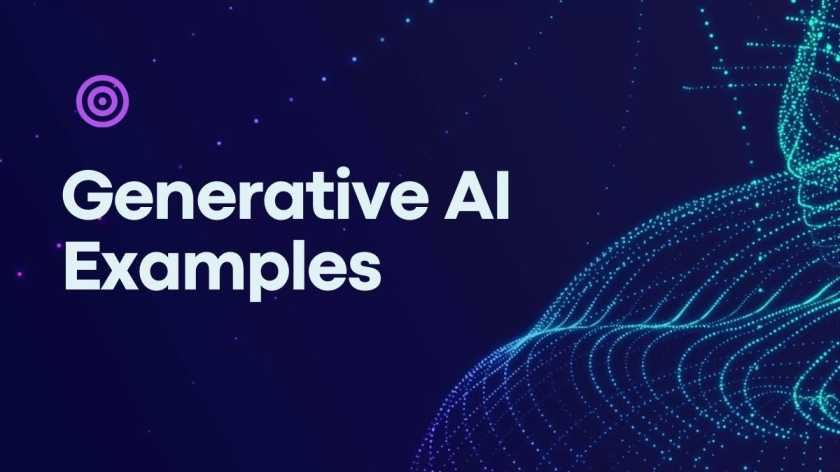In today’s digital age, the future of content creation is undertaking a pivotal move, driven by improvements in Generative Artificial Intelligence (AI). And, this transformation impacts several industries, ranging from advertising and marketing to education and healthcare. Generative AI, which produces quality content, including text, images, audio, video and complex designs, is reshaping the future of content creation by making it impressive and creative. So, let’s explore what Generative AI is, how it works and how it impacts the future of content creation, including Generative AI examples.
Understanding Generative AI
Generative AI is a transformation technology that is designed to create new content, such as text, images and videos. By using machine learning (ML), the technology helps produce personalised output based on human input. It is essential for AI engineers to train the technology using large data sets, which the model accesses while generating the best response to a prompt. Additionally, generative AI is a set of predictive artificial intelligence. On the basis of the information provided, generative AI focuses on creating the best response to the user’s prompts.
Generative AI can be used to create unique content (written, visual or audio), outline complex data, create code, support monotonous tasks or make customer service more tailored. For those interested in transforming their career in this field, a generative AI course equips them with complete insights and practical knowledge.
How Does Generative AI Work?
Generative AI works by using ML to learn a large dataset of existing content. First, the technology collects a dataset of existing content. The dataset can include anything, from text to images and videos. Then, the model is trained on the dataset. The processing time depends on the size of the dataset and the density of the model.
After the model is trained, it can be used to create new content. By using the patterns and relationships learned from the dataset, the model generates new content.
Generative AI Examples
Generative AI examples are increasing rapidly due to the fast adoption of this emerging AI technology. Generative AI is already implemented in different industries, from healthcare and education to finance and marketing. And, more examples of generative AI are developing in further sectors as developers work to enhance the technology to generate new usages.
So, here are some examples of generative AI in different industries:
- Generative AI in Healthcare: Generative AI provides innovative solutions for treatment planning, diagnostics and drug detection, allowing healthcare providers to provide more effective services. Some of the examples of Generative AI in healthcare are:
- AI Apps for Patients
- AI Apps for Personalised Medicine
- AI Apps for Early Detection of Certain Diseases
- Generative AI in Education: Generative AI in education is used to generate custom learning plans for students as per their grades and complete understanding of different subjects. Some of the Generative AI examples in education are:
- AI Apps for Personalised Vocabulary Learning Experiences
- AI Apps for Language Learning Practice
- AI Apps for Creating Engaging Content for Course Materials
- Generative AI in Cybersecurity: Generative AI is used in cybersecurity to replicate risky environments that can be used to check security policies and controls. Generative AI examples in cybersecurity include:
- AI Applications for Advanced Thread Detection and Analysis
- AI Apps for Complex Threat Detection and Response
- AI Apps for Cybersecurity Management
- Generative AI in Finance: Generative AI technology is used in finance to provide more customised services, enhance decision-making processes and boost operational productivity. Here are some examples of Generative AI in finance:
- AI Apps for Fraud Detection
- AI Applications for Personalised Financial Assistance
- AI Apps for Personal Finance
- AI for Personalised Invoice Processing
- Generative AI in Advertising and Marketing: Generative AI helps reduce the time spent on manual tasks to embrace enhanced creativity. Some examples of Generative AI are:
- AI Apps to Produce Automated Video
- AI Apps to Create Innovative Images
- AI Applications to Create Dynamic Content for Campaigns
The Impact of Generative AI on the Future of Content Creation
The impact of Generative AI on shaping the future of content creation is above the realm of art and creativity. It is transforming various industries, including healthcare, education, finance, advertising and marketing. The invention of Generative AI allows you to use its tools to generate primary ideas, create unique content, discover different opportunities and produce whole pieces of artwork.
The Bottom Line
Though Generative AI is still in its development stages, it has the ability to transform the world. And, its tools are already being used in several industries, from education and healthcare to marketing and finance, to improve creativity, productivity and personalisation.
Now that you understand the Generative AI examples mentioned above, consider its transformative force and include it in your content plans.
So, if you are interested in enhancing your AI skills, then embark on your journey with a Generative AI course. Enrol in the Advanced Certificate Program in Generative AI in association with E&ICT Academy, IIT Guwahati offered by Imarticus Learning. This program will help you explore artificial intelligence that can create new and unique content.

